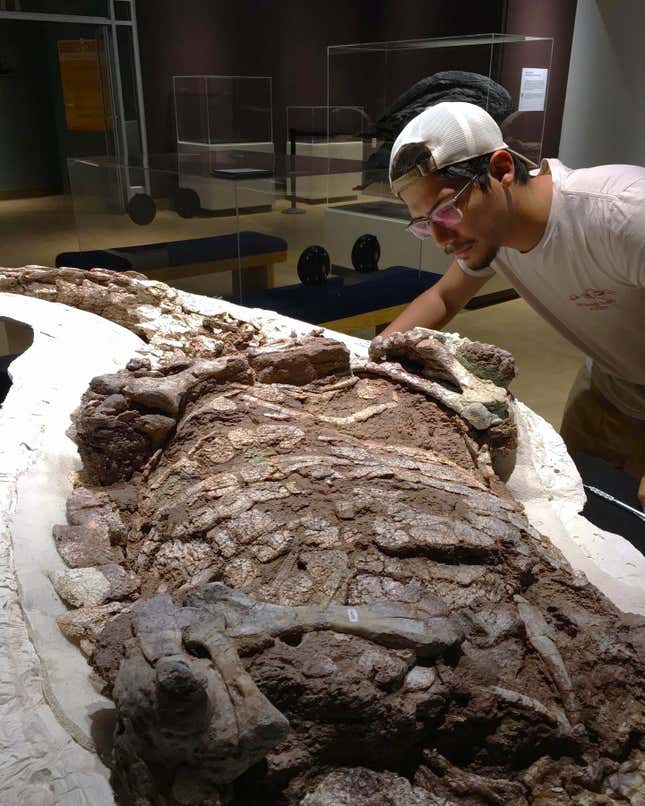After death, we all run the risk of being forgotten. Such was the case of Garzapelta muelleri, an ancient reptile that lived over 200 million years ago and even went unidentified for 30 years after its bony remains were found.
Garzapelta is an aetosaur, a group of archosaurs more closely related to the ancestors of crocs and alligators than birds. But in paleoart reconstructions (see above), the animal looks like if a crocodile were much more polite. Aetosaurs’ upturned snouts and concealed teeth make the primarily herbivorous reptiles a little more approachable (at least as an idea) than their living relatives.
Advertisement
Research describing the Garzapelta fossil—which has been collecting dust on a shelf at Texas Tech University for the better part of 30 years—was published earlier this year in The Anatomical Record.
Advertisement

Advertisement
The ancient creature is named for Garza County, Texas, where it was found, the shieldlike carapace (“pelta”) it wore, and its original discoverer, the paleontologist Bill Mueller.
As far as anatomies go, Garzapelta’s is worth recording. The large animal was armored like an ankylosaur, a bonafide dinosaur recognizable (besides the armor plating) for its clubbed tail. Those bony plates, or osteoderms, made the animal a much more formidable undertaking for Triassic carnivores.
Advertisement
The holotype specimen—described in the recent paper—is a Garzapelta carapace that is roughly 70% complete and features most of the animal’s body.
“We have elements from the back of the neck and shoulder region all the way to the tip of the tail,” said William Reyes, a researcher at the University of Texas and the study’s lead author, in a university release. “Usually, you find very limited material.”
Advertisement
Similar to some ankylosaurs, whose bony spikes grew right out of their ribs, Garzapelta’s sides were covered in curved spikes that gave it additional protection. But even being covered in spikes, armor, and probably weighing at least a few tons can’t change my impression of this ancient croc relative: it’s cute. They don’t make ‘em like they used to.
More: Fossilized Stomach Contents of Armored Dinosaur Reveal Its Last Meal
Services Marketplace – Listings, Bookings & Reviews